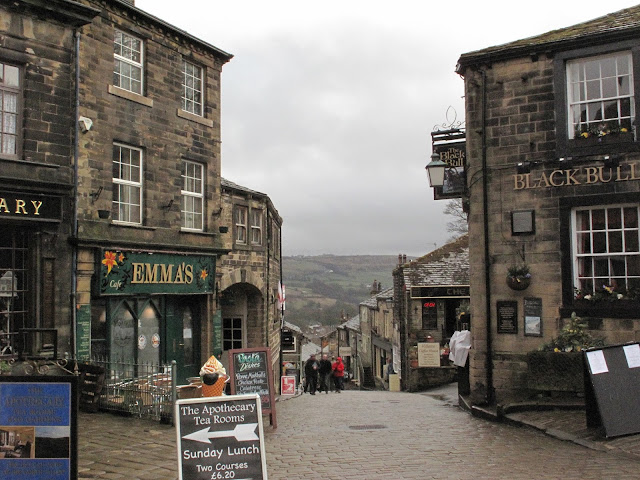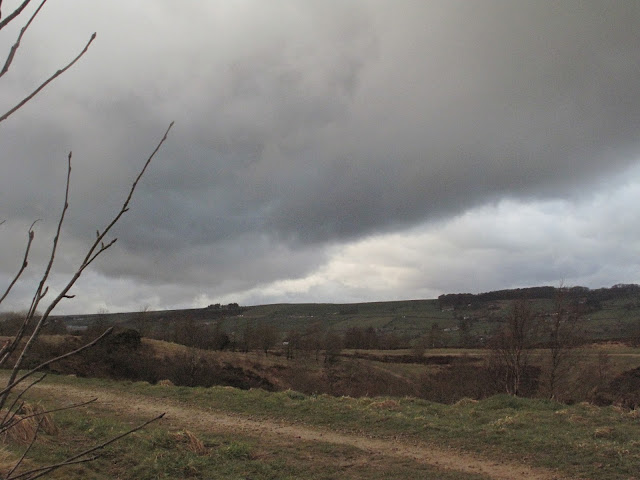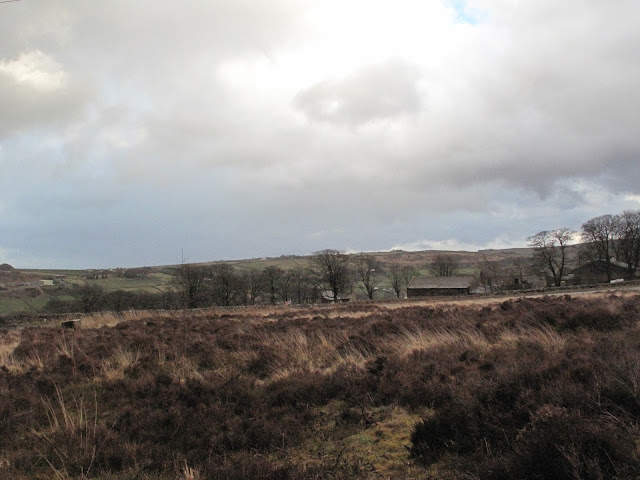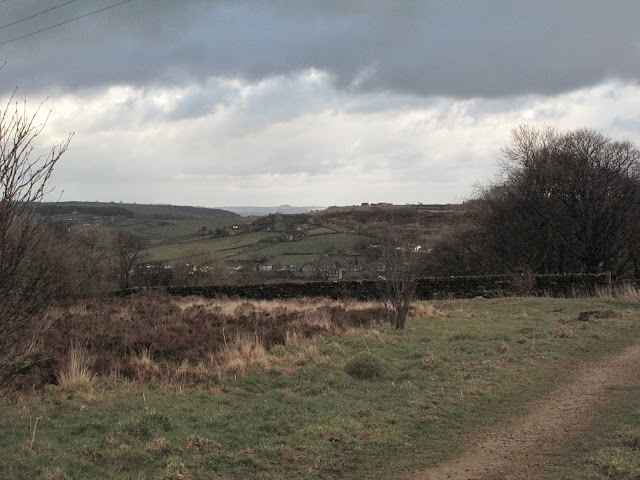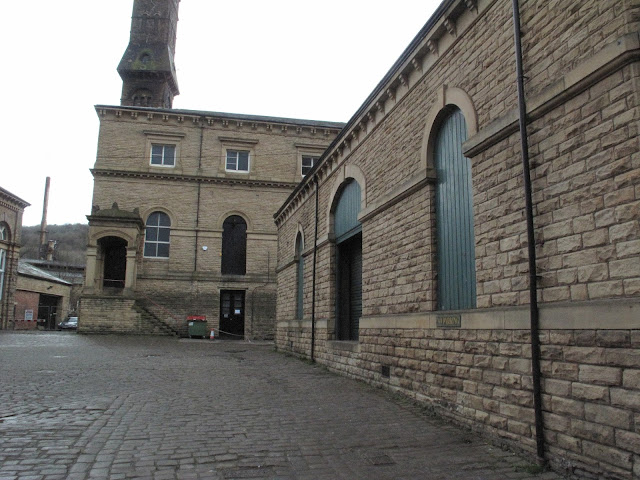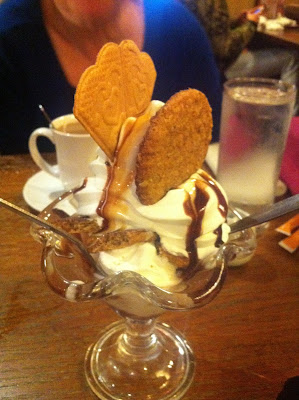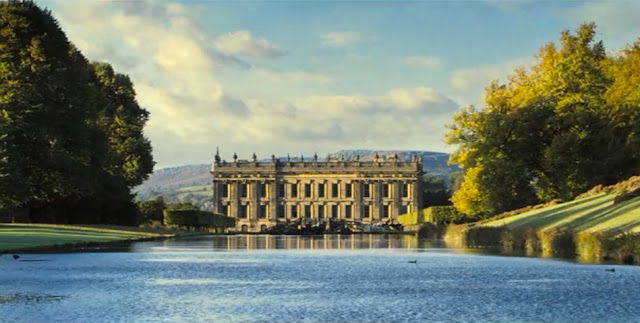 |
| A real ruined Abbey! We visited Rivaulx Abbey in north Yorkshire. |
As I was flipping through my travel journal to make a post about this day to my dismay I could not find it anywhere. So I shall be making one more post from memory. :)
England 2015 Travel Journal
Monday, March 30
We began our day with another jaunt into York. Instead of using the York Outlets Park'n'Ride we found a city parking lot just outside one of the city's medieval gates. The parking rates were reasonable, somewhere between £2-4 for a couple of hours, and we could walk to the attraction that we came to see.
In the rooms of this particular city gate was an exhibit about the infamous Richard III and the artifacts found on the Towton battlefield (mostly some fiendish looking weapons). It gives you an interesting look at what it would have been like for a soldier during the 1460s-80s, such as the camps, the armor, the battles, the weapons and such (as well as the rather horrible fighting that went on). There was also an informative short video about the Battle of Towton.
 |
| Did Richard wear this dashing suit of armor? |
This isn't Richard's actual armor, but it is a good example of what he might have worn. It was an unusual set of stairs to climb up from the street to the exhibit, and possibly the narrowest, lowest-ceiling-ed staircase I've ever climbed!
We finished our sojourn in York early enough to zip up to North Yorkshire and to one of the sights we'd decided to see based the wonderful plethora of brochures and magazines provided in our AirBNB cottage. It was the amazing Rievaulx Abbey. We almost went to the more famous Whitby Abbey, and I wish we could have, since it is situated in grandeur on the Yorkshire coast. But it was just too far to visit that day by car.
Even though we could only make it to one site that afternoon it still felt as if we got to see so much because on any drive through England there will be beautiful scenery and many historic landmarks along the road. For instance, we drove right past Castle Howard – an enormous estate that has been the seat of some powerful people in the past. I think we might have actually driven through the estate because we passed a couple of gates like this:
 |
| Entering the grounds of Castle Howard. |
You can actually catch a glimpse of the Castle at one point!
 |
| The Village of Helmsley |
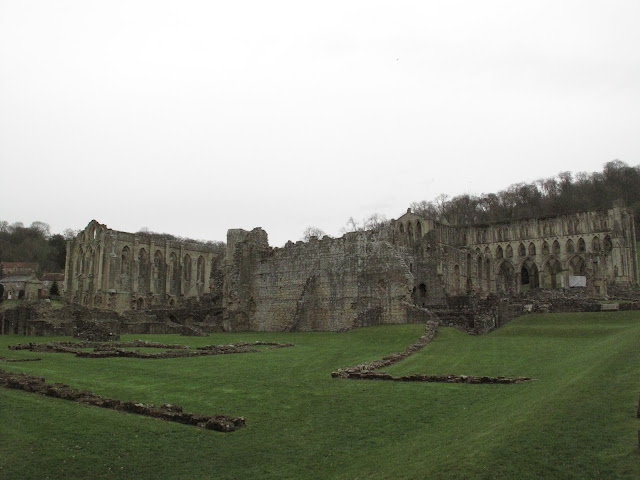 |
| Rievaulx Abbey in all of it's ruined glory! |
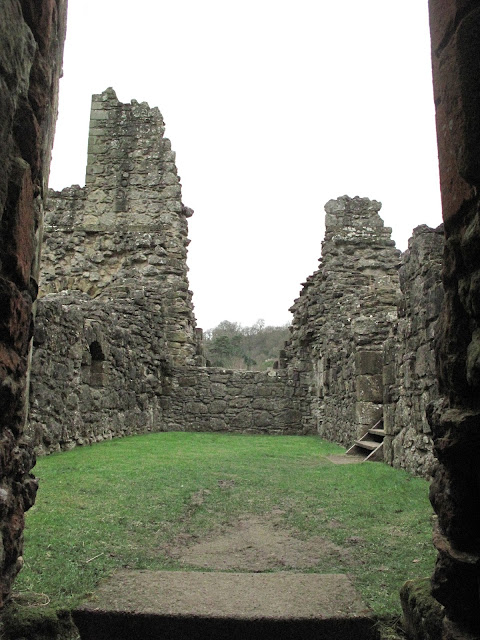 |
| One of the crumbling rooms of the Abbey |
 |
| The stony dining hall of the Abbey |
Here we are in the main hall. It was haunting to stand in that space and imagine what it must have looked like in all of its glory. It just amazes me how people so long ago could have constructed such intricate and enormous structures, and yet here they still stand, looking more beautiful than any modern building I have ever seen. The motives were often questionable – power, display, intimidation, self-righteousness – but even that can tell us more about the people of the past and bring them closer to us, which also helps us to understand ourselves, since humankind never really changes.
Okay, now I am done rhapsodizing or philosophizing or monolog-izing.... (and making up words)! ;)
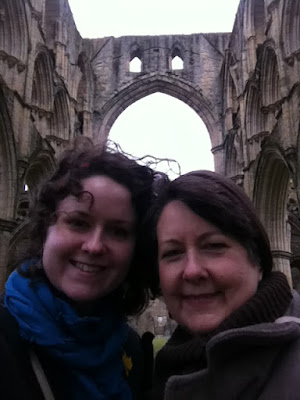 |
| Keeping warm... |
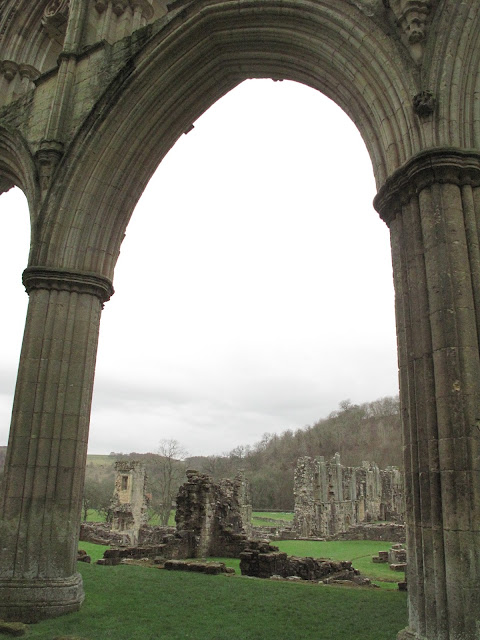 |
| Would Henry Tilney call this a picturesque view? |
One minute my mind was full of monks walking cold halls trying to live a life of self-denial in this center of the Roman church in this remote corner of the north, and the next I could see soldiers of Henry VIII burning and sacking the Abbey for its riches in this far corner of the kingdom. Then I would summon up some romantic poets coming to the ruins to sit and contemplate the mossy stones and vaulted arches for inspiration, or Victorian Londoners up for a northern sketching holiday making their way as best they can in full skirts over the broken stairs and walls for the perfect picturesque view.
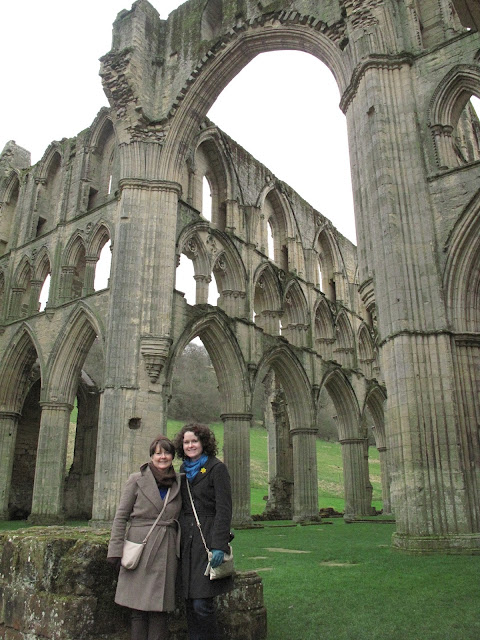 |
| Both of us posing under that great arch would make for a dramatic painting, I think. |
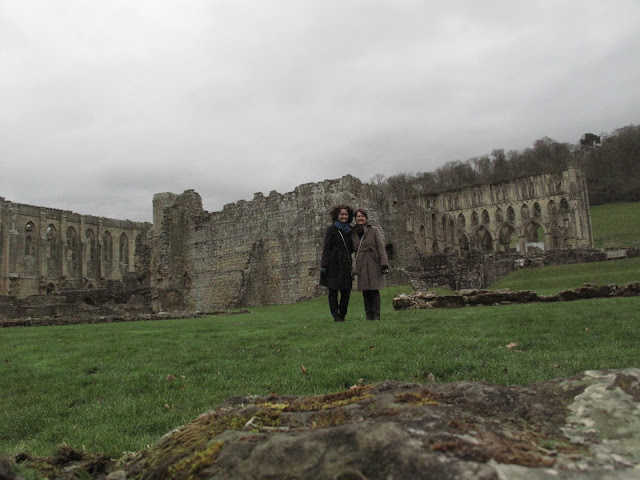 |
| Who needs to read Mrs. Radcliffe when you've got the real thing! ;) |
©2016 Anna Morton


